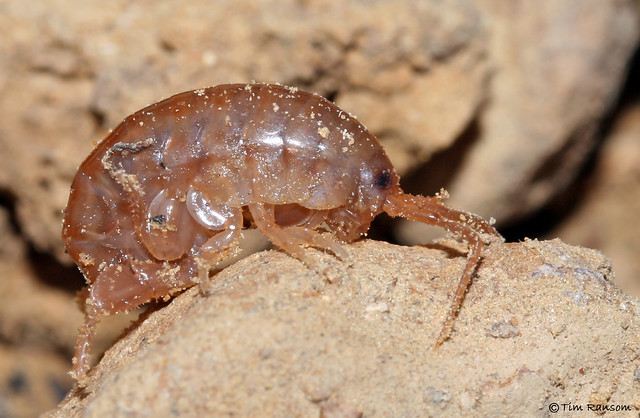Friday, November 19, 2010
November 19, 2010 : Sandhopper
Sandhopper
Talitrus saltator, a species of sand hopper, is a common amphipod crustacean of sandy coasts around Europe. The animal's typical "hopping" movement gives the animal its common name, and is produced by a flexion of the abdomen. In order to do this, it must stand on its legs (amphipods usually rest on their sides) and suddenly extend its abdomen out from under its body. It can thus leap several inches into the air, although without any control over its direction. A great deal of scientific research has been carried out on the animal, to determine the environmental cues it uses to control its behaviour.
Talitrus saltator reaches lengths between 8.2 mm (0.32 in) and 16.5 mm (0.65 in), with males being slightly larger than females. The body is greyish-brown or greyish-green in colour, with a single pair of black eyes. It has a distinct pair of antennae, with one antenna more robust than the other.
Talitrus saltator is found around the coasts of the North Sea and north-east Atlantic Ocean from southern Norway to the Mediterranean Sea. In most of its range, its daily cycle is strongly linked to the tides, with daily migrations of up to 100 m (328 ft), but where there are no significant tides (as in parts of the Mediterranean), visual cues are used instead.
Related Articles : Pram Bug and Amphipods
Subscribe to:
Post Comments (Atom)


No comments:
Post a Comment